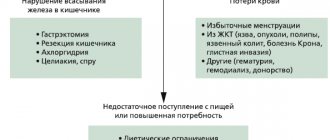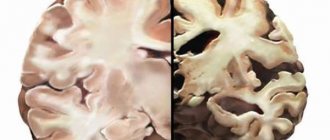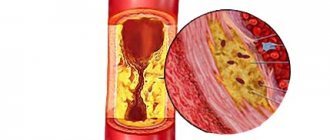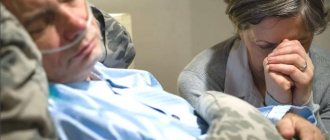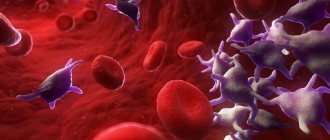Neutropenia has become one of the symptomatic diseases of our time. This term characterizes a state of the body in which an abnormally small number of neutrophils remain in it. The main causes and consequences of this phenomenon became the subject of research in this material. Here we will look at what neutropenia is in children and adults, what types and forms it has, how to get rid of such a disease and other relevant medical issues.
Features of diagnosis and treatment of neutropenia.
What is neutropenia
In normal conditions, in healthy adults and children, neutrophils make up 50% to 70% of all circulating white blood cells, acting as the body’s main defender against all kinds of infections, thoroughly searching for and destroying dangerous bacteria in the blood. If, for certain reasons, such an important proportion is violated, the protective function in the body is significantly weakened or disappears altogether, immediately leading to the appearance of many diseases dangerous to health and life. Such people become highly susceptible to acquiring various bacterial infections. This applies to both adults and children, in whom manifestations of neutropenia are quite common, although in most cases they occur without dangerous complications. However, at this age, their identification and diagnosis are very important.
Why is leukopenia dangerous?
Side effects are common to all types of antitumor treatment, even if it is carried out according to modern standards. Most of the complications, including those associated with suppression of hematopoiesis, such as leuko- and neutropenia, develop delayed, when the patient is no longer in the hospital, but is discharged for outpatient observation.
Leukopenia is a condition characterized by a decrease in the level of leukocytes in the blood.
Leukocytes are white blood cells. One of the varieties of blood cells, along with red blood cells and platelets.
The main function of leukocytes is to protect the body from infections, foreign proteins and foreign bodies that can harm it and upset the balance of biochemical reactions.
The content of leukocytes in the blood is not constant; it changes dynamically throughout the day depending on the time of day and the functional state of the body. For example, the level of leukocytes increases not only during the presence of any inflammation in the body, but also usually increases slightly in the evening, after eating, and also after physical and emotional stress.
But we are talking about those cases when the number of leukocytes decreases.
There is always some reason for this, including this natural complication of antitumor treatment.
Causes of the disease
The realities of life are such that neutropenia can arise and form literally before our eyes - within several days and even hours, acquiring an acute form. The main reasons for this phenomenon have long been established and studied by official medicine:
- Congenital pathology.
- Genetic failure.
- Use of powerful medications (antidepressants, cytostatics, antihistamines, antitumor and anticonvulsants).
- Radiation.
- Weakened immunity.
- Various ailments (malaria, typhoid fever, tuberculosis, helminthiasis, polio, diabetes, viral hepatitis, etc.).
- Bone marrow damage.
- Oncological diseases.
- Lack of vitamin 12 and folic acid.
In the chronic form of the disease, which lasts for a long time, sometimes for whole years, everything is explained by a decrease in the volume or abnormal disproportion of the production of such cells in the spleen.
Basic concepts of NP
The main cells that saturate the body are leukocytes, one of whose functions is to identify foreign agents, suppress them and store in memory the encounter with each of the individual types of harmful proteins.
Neutrophils are found in granulocytes, which are part of white blood cells containing special granules. Compared to all other components of granulocytes, their majority are neutrophils.
That is why the term agranulocytosis (decrease in the number of granulocytes) is called the identical term neutropenia.
In most formations of purulent inflammatory foci, neutrophils are recorded, so their main task is to neutralize parasitic microorganisms.
The formation of purulent foci occurs due to the deformation of microbes , their tissue formations and neutrophils, which rapidly move from the blood to the site of inflammation.
Neutropenia
Types and forms of pathology
Experts distinguish between the primary form of neutropenia, in which an internal deficiency of myeloid cells begins to form in the bone marrow structure, and the secondary form, when external factors influence the volume of myeloid cells in the bone marrow. Relative and absolute neutropenia is also recorded, which can, with various modifications, take the following forms of the disease:
- Soft (initial).
- Moderate (average).
- Severe (acute)
These forms depend on the absolute number of neutrophils in the patient’s body. Infectious transient neutropenia is often associated with recent infectious diseases. Very dangerous is febrile neutropenia, observed most often in cancer patients, or the so-called. "neutropenic fever" This condition in patients occurs suddenly and develops very quickly with a rapid decrease in the number of neutrophils in the blood, representing a real threat to life. There are also other types of pathology - benign neutropenia of childhood, in which the child’s number of neutrophils performing protective functions sharply decreases. This phenomenon is recorded, as a rule, in one-year-old children, during their first year of life, and lasts from two to three months to several years, passing by itself. This does not exclude, of course, constant medical monitoring of the child.
Is it possible to increase the level of leukocytes and neutrophils?
Chemotherapy drugs are toxic substances. There are indications and contraindications for their use, because they can both help the patient and cause great harm if used thoughtlessly. The only appropriate and reasonable method to increase the level of white blood cells and neutrophils is to wait.
Yes this is true.
Firstly, because each organism has its own characteristics and is not always able to recover by the time specified by the recommendations.
The intervals between cycles are optimal, but a deviation from the timing by 1-2 weeks (sometimes more, if necessary) is acceptable if there are contraindications to chemotherapy.
Secondly, any drugs that stimulate an increase in the level of leukocytes and neutrophils are dangerous because after several such stimulations, the bone marrow reserve can be depleted, and after this, recovery will take much longer and will be associated with possible complications.
If leuko- and neutropenia is constant, and the body does not recover properly even with increasing intervals between cycles, then specialized drugs are prescribed, which should be used only under the supervision of a doctor in strictly indicated situations.
Any so-called immunomodulators, immune stimulants will not bring any benefit, there will be no effect from them, because leukocytes will still decrease during chemotherapy, as it should be, but at the same time such drugs can provoke the development of undesirable reactions.
Symptoms
In medical practice, the symptoms of neutropenia can go unnoticed for a long time, clearly manifesting themselves only in the acute, already sufficiently developed stage of the disease. Typical symptoms may be:
- The appearance of pus.
- Fever.
- Frequently recurring infections leading to the formation of ulcers in the mouth, as well as diarrhea, an uncomfortable burning sensation during urination, and strange redness of the skin.
- Pain and swelling around the wound.
- Unpleasant feeling in the throat, etc.
Since the range of such symptoms is enormous, every unusual case of deviation from the norm should immediately attract close attention from an adult.
Norms
In a normal state, the quantitative indicator of neutrophils is from forty-five to seventy-five percent (or about 1500 per microliter of blood) of all leukocytes. It is the quantitative indicator of NF in the blood that plays an important role, since the number of other components of leukocytes can fluctuate, but the levels of neutrophils remain normal.
Normal rates vary slightly depending on a person's race. So in dark-skinned people, neutropenia is diagnosed when neutrophils decrease to less than 1200 per 1 microliter of blood. This happens because people with this skin color have lower neutrophil levels than white-skinned people.
The greater the deficiency of these components in leukocytes, the more pronounced the clinical manifestations and the greater the risk of progression of life-threatening complications. Severe forms of this disease are rarely recorded.
Normal NF indicators for childhood are shown in the table below:
General leukocytes Neutrophils Lymphocytes Monocytes Eosinophils
| Age | average | range | average | range | % | average | range | % | average | % | average | % |
| birth | 18.1 | 9—30 | 11 | 6—26 | 61 | 5.5 | 2—11 | 31 | 1.1 | 6 | 0.4 | 2 |
| 12 hours | 22.8 | 13—38 | 15.5 | 6—28 | 68 | 5.5 | 2—11 | 23 | 1.2 | 5 | 0.5 | 2 |
| 24 hours. | 18.9 | 9.4—34 | 11.5 | 5—21 | 61 | 5.8 | 2—11.5 | 31 | 1.1 | 6 | 0.5 | 2 |
| 1 Week | 12.2 | 5—21 | 5.5 | 1.5—10 | 45 | 5 | 2—17 | 41 | 1.1 | 9 | 0.5 | 4 |
| 2 week | 11.4 | 5—19.5 | 4.5 | 1—9.5 | 40 | 5.5 | 2—17 | 48 | 1 | 9 | 0.4 | 3 |
| 1 month | 10.8 | 6—17.5 | 3.8 | 1—9 | 35 | 6 | 2.5—16.5 | 56 | 0.7 | 7 | 0.3 | 3 |
| 6 months | 11.9 | 6—17.5 | 3.8 | 1—8.5 | 32 | 7.3 | 4—13.5 | 61 | 0.6 | 5 | 0.3 | 3 |
| 1 | 11.4 | 6—17 | 3.5 | 1.5—8.5 | 31 | 7 | 4—10.5 | 61 | 0.6 | 5 | 0.3 | 3 |
| 2 | 10.6 | 5.5—15.5 | 3.5 | 1.5—8.5 | 33 | 6.3 | 3—9.5 | 59 | 0.5 | 5 | 0.3 | 3 |
| 4 | 9.1 | 5.0—14.5 | 3.8 | 1.5—8.5 | 42 | 4.5 | 2—8 | 50 | 0.5 | 5 | 0.3 | 3 |
| 6 | 8.5 | 5—13.5 | 4.3 | 1.5—8 | 51 | 3.5 | 1.5—7 | 42 | 0.4 | 5 | 0.2 | 3 |
| 8 | 8.3 | 4.5—13.5 | 4.4 | 1.5—8 | 53 | 3.3 | 1.5—6.8 | 39 | 0.4 | 4 | 0.2 | 2 |
| 10 | 8.1 | 4.5—13.5 | 4.4 | 1.8—8 | 54 | 3.1 | 1.5—6.5 | 38 | 0.4 | 4 | 0.2 | 2 |
| 16 | 7.8 | 4.5—13 | 4.4 | 1.8—8 | 57 | 2.8 | 1.2—5.2 | 35 | 0.4 | 5 | 0.2 | 3 |
| 21 | 7.4 | 4.5— 11.0 | 4.4 | 1.8—7.7 | 59 | 2.5 | 1—4.8 | 34 | 0.3 | 4 | 0.2 | 3 |
Neutropenia in children
Particular attention should be paid to children in this regard. As soon as a child, especially an infant, exhibits strange symptoms like those just listed in the previous section, parents should take note and consult a pediatrician. We must also constantly remember the specifics of the infant form of the disease, which has its own differences compared to adults. Thus, children are diagnosed with benign chronic neutropenia, which is cyclical. In this form, the number of neutrophils changes, showing low levels and reaching the norm, and vice versa. The benign type of the disease goes away by 2-3 years. Doctors consider aplastic anemia to be the most common cause of the disease in children.
Febrile neutropenia - risk factors for complications
In neutropenic fever, the risk factor for complications is primarily the severity of the neutropenia and the duration of neutrophil levels below normal. The most serious side effects of cancer fever are patients with neutropenia below 100/µL, which is expected to last 7-10 days. A greater risk of complications is also associated with people suffering from underlying health conditions.
The MASCC system is used to assess the risk of complications and resulting death, which makes it possible to assess the severity of the disease in accordance with criteria such as the presence of hypotension, COPD, the need for venous irrigation, and age.
A complication of febrile neutropenia may be the generalization of infection and the development of bacterial sepsis , which is an immediate life-threatening condition. Early treatment reduces the risk of serious complications.
Diagnostics
Since the development of the disease in practice often leads to various kinds of complications, doctors strongly do not recommend allowing its spontaneous existence without treatment. As soon as any symptoms of the disease or strange deviations of the body from the norm are detected, it is necessary to undergo a thorough diagnostic study using highly effective equipment in order to accurately identify the causes and stage of the disease and begin its treatment. These diagnostic methods include:
- Determination of the level of immunoglobulins in the blood.
- Sometimes a bone marrow puncture is necessary. To do this, a small sample is taken from the ilium of the pelvis.
- Genetic research (in the presence of congenital abnormalities).
- Conducting a general blood test with a leukocyte formula (CBC with a formula).
- Additional tests - test for lupus, determination of vitamin B12 levels.
- X-ray of ENT organs, chest.
In some cases, it is possible that you will have to resort to genetic studies, bone marrow puncture and other serious laboratory tests.
Why does this state matter to us?
Leukocytes are responsible for immunity and resistance to various unfavorable factors, therefore, when their level in the blood decreases, the body’s “defense” is primarily affected.
In this case, a person becomes more vulnerable to any infection: bacterial, viral or fungal.
In most cases, with the development of infectious complications, specialized antitumor treatment should be postponed. Consequently, in addition to the main danger for humans, which lies precisely in the infectious process, we are also faced with the fact that we have to postpone the treatment of cancer indefinitely until we deal with the infection.
Treatment
When the causes of the disease are established, treatment begins on the recommendation of the attending physician. There are many proven methods for treating neutropenia using a variety of medications. Before starting treatment, the doctor determines the form and severity of the disease, since the methods of control will depend on this. If the cause of the disease is an infection, it is necessary to get rid of it. This can be done in a hospital clinic or at home, the attending physician decides. The main emphasis is on strengthening the immune system. Medicines used for recovery include:
- Vitamins.
- Antibiotics.
- Immunostimulants.
If there are ulcers in the mouth, use hydrogen peroxide, saline or chlorhexidine solution. They are used for rinsing. And painkillers are suitable for pain relief.
If the disease is severe, the patient is placed in an isolated room where sterility is strictly maintained and ultraviolet irradiation is carried out.
Treatment of neutropenia in children, in addition, will require a lot of patience from parents, as is often the case when older people communicate with young patients. You must be careful with the use of various antibacterial drugs, basing treatment solely on the advice of a professional doctor. Features of treatment of the disease in children:
- If the disease appears due to the use of various medications, its use is stopped, and neutropenia itself does not require correction.
- In severe cases, the child must be urgently hospitalized, since during such a course of the disease various infections quickly spread. In the hospital, the baby will be prescribed strong antibiotics, and growth factor drugs will be prescribed to stop the level of neutrophil leukocytes.
- If this disorder was caused by an allergic or autoimmune condition, the use of corticosteroids is appropriate.
- All cases of the disease involve the use of special drugs that increase immunity.
- Sometimes a bone marrow transplant is required. This operation is performed on children over 12 years of age.
There are also traditional medicine recipes that help cope with this problem:
- 2 tbsp. l. walnut leaves pour 2.5 tbsp. boiling water, leave overnight, while the container should be well closed. You need to drink the drink ¼ tbsp. daily. The course of therapy is one month.
- 250 gr. finely chop the onion, add 1 tbsp. sugar and 500 ml. water. Afterwards the mixture is placed on low heat for 1-1.5 hours. The broth is cooled, 2 tbsp is added to it. l. honey, filtered and poured into a glass container. Drink 3 times a day, 1 tbsp. l.
- 0.5 kg. cranberries are softened and mixed with 2-3 pcs. apples, which are pre-cut into cubes, as well as 200 gr. walnut. Next, the drug is poured with 200 ml of water and 500 grams are poured. Sahara. All this is placed on the stove to bring to a boil, and then poured into a container. The medicine has the consistency of jam; it is eaten along with tea, 1 tbsp. per day.
- 2 cups of honey and 1 cup of dill are poured into 2 liters. hot water, you should also add 1 tbsp. l. valerian root and leave in a thermos for a day. Before taking the medicine, you need to strain it. It is recommended to drink the infusion 3 times a day, 1 tbsp. l. Be sure to store it in the refrigerator.
- You can also make a balm. To do this, take 500 g. chopped walnut kernels, 300 gr. honey, 100 gr. aloe juice, 200 ml. vodka and 4 pcs. lemon The resulting mixture is shaken well and placed in a dark place for a day. You need to drink this balm 3 times a day, 1 tbsp. l.
In addition to drug treatment and traditional medicine, following a special diet will not hurt. Such nutrition implies the exclusion of perishable foods from the diet, as well as poorly processed ones, since they may contain harmful bacteria and microbes. For a quick recovery, you should add the following products to your menu:
- Pasteurized milk, yogurt, ice cream, Parmesan, mozzarella, cheddar and Swiss cheese.
- Pork, lamb, boiled or fried fish, beef, poultry.
- Hard-boiled eggs.
- Freshly prepared first courses.
- Oranges, bananas, melons, tangerines, grapefruits.
- Canned, frozen fruits and pasteurized juices are allowed.
- Rice, pasta, potatoes, noodles, and they can be prepared in any form.
- Cookies, baked goods, bread.
- Roasted nuts.
Do not forget about the need to drink 2 liters of liquid throughout the day: fruit drinks, water, juice, tea.
Why is it important to know about the leukocyte formula?
There is a so-called leukocyte formula, which is formed from subtypes of leukocytes: monocytes, eosinophils, basophils, lymphocytes and neutrophils.
Each species performs its own specific function, although it is based on immune processes.
When we receive the results of a clinical blood test, the level of leukocytes in it may be normal, but it is impossible to say offhand what part of this total indicator is this or that subtype. At the same time, this is very important for planning systemic treatment. That is why oncologists require that blood tests indicate the absolute number of all subtypes of leukocytes. The patient should also pay attention to this when receiving test results.
Neutrophils are of greatest interest to chemotherapists. This subtype of leukocytes plays a very important role in protecting the body from bacterial and fungal infections and a relatively lesser role in protecting against viral infections. Neutrophils play virtually no role in antitumor or anthelmintic defense; other cells participate in these processes.
During chemotherapy, the level of neutrophils is a critically important indicator. If the number of neutrophils falls below 0.5x10*9/l, then normal microflora, which is present, for example, in the mouth or intestines, can cause infections. If the count is reduced to <0.2 x 10*9/L, the inflammatory response may be suppressed and the usual signs of inflammation - leukocytosis or white blood cells in the urine or at the site of infection - may not be observed. Acute severe neutropenia, especially in the presence of another factor (for example, cancer and the fact of anticancer treatment), significantly impairs the function of the immune system and can lead to the development of fulminant fatal infections. The integrity of the skin and mucous membranes, blood supply to tissues, and the patient's nutrition also influence the risk of developing infections.
If chemotherapy is carried out, despite the low level of leukocytes in general and neutrophils in particular, this will lead to complete inhibition of the functioning of the bone marrow, in which our blood cells are formed and mature. This guarantees the development of all sorts of complications, which will have to be fought long and hard with a 50/50 chance of success. Therefore, it is better to postpone treatment for a week to allow the body to recover on its own, than to carry out a cycle and then return to therapy in a month at best.
In the treatment of breast cancer, gastrointestinal tract, oncogynecological diseases, lung cancer and other tumors, various combinations of drugs are used that have varying degrees of toxicity.
Therefore, in each individual case, the attending physician makes a decision on the safety of carrying out the next cycle of chemotherapy individually based on the current situation.
You should not demand or persuade the attending physician to carry out treatment, despite poor blood test results. In this case, the doctor does not want to make you worse, but he realistically assesses the risks and tries to protect you from them.
How is it diagnosed?
To make an accurate diagnosis, if neutropenia is suspected, the doctor will refer the patient for laboratory blood tests. The most common methods of blood testing for neutropenia include:
- Complete blood count (CBC ). Helps determine the quantitative state of granulocytes,
- Biochemical blood test (BAC). It is a more informative method of blood testing than a clinical blood test,
- Study of the hematopoietic function of the bone marrow . It is of greatest importance in which it is possible to assess the inhibition of any of the hematopoietic germs and identify why this happened,
- Double blood culture. Blood cultures are performed to check for the presence of pathological bacteria and fungal agents,
- Sowing the contents from the drainage outlet . Performed in patients who have undergone surgery,
- Stool examination. It is recommended to examine stool for infectious diseases, when stool is weak, after surgery,
- Myelogram. The result of microscopy of a bone marrow smear, expressed in the form of a table or diagram, which determines the qualitative and quantitative components of cell nuclei in myeloid tissues,
- Hemogram.
Diagnosis methods depend on the general condition of the patient and the suspicions of the attending physician.
